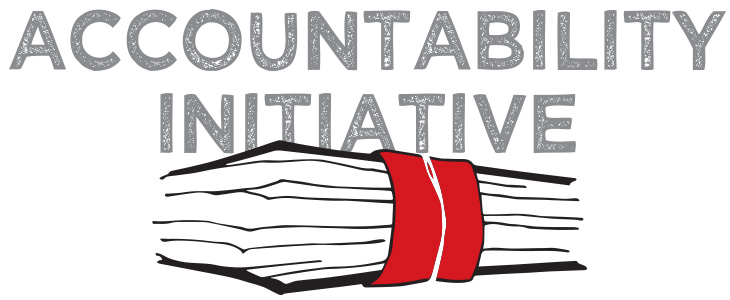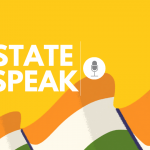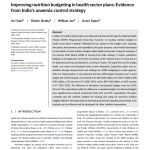
Changing the face of development… One SMS at a time
19 July 2013
At the turn of the millennium, Manuel Castells had come out with an argument in his ‘Theory of the Network Society’[1] that Information and Communication Technology (ICT) will have strengthened the flow of information- so much so, that it would alter the intensity, velocity and scale of the structural processes in society. Today, the explosion of ICT for Development (ICT4D) mobile technology, network hardware and software, and the various services that accompany them, have led to a variety of exploratory approaches to bridge the development[2] gap. At the heart of this ICT4D concept, the dominant debate is focused on whether it can lead to concrete development goals or whether it, in fact intensifies the digital divide. This blog will look at the ICT4D paradigm in India and the challenges that it faces in its current form.
Four years ago, an event called the ‘Random Hacks of Kindness’ (RHoK) was organized to build open technology based innovative solutions that can in turn revolutionize social development. Its most recent event, held in Gambia, concluded with solutions ranging from bribe alerts and on-field volunteer tracking to mapping the location of water trucks and making data reporting easier. From the late 1990’s, the rhetoric of ICT4D was seen as a standard flow of information from the ‘technologically-strong’ North towards the ‘developing and poor’ South. It seems that in the last few years there has been a movement towards e/m-solutions that include web/mobile based information collection, monitoring and data visualizations to enhance tracking of development schemes. These are built taking social, economic and political structures in mind, steering away from the one-size-fits-all form of solutioneering.
Over the last few years, this movement seems to be picking up in India as well. In April 2013, the Planning Commission held a ‘Hack the Plan’ event which brought together young innovators to create visualizations for generating solutions across sectors such as Agriculture, Rural Development, Health, Water, Energy, Education and Urban Development. In a similar vein to the international context, there is a general trend propagated by international agencies as well as the government towards a ‘rights-based’ approach in bringing mobile and internet based technologies to the local tiers. This approach brings in participation, empowerment, accountability and transparency at the core of its framework and tries to make it a bottom up process. This is loosely based on the concept that open data and, increased access to ICT will expand the means through which people can access various services. As mentioned in previous blogs (see here, here, and here), drawbacks aside, there are several positive forms of impact that ICT has had so far. In 2012, the Indian Ministry of Communications and IT announced that public services will now be available through mobile devices (see link). This came in addition to several m-governance based schemes such as SMS alerts for government officials, monitoring through GPS, IVRS to track teachers and to get overall feedback. Early this year, 200 mobile applications were made available/approved by the government to apply or track the status of particular government services (see here).
Despite the obvious benefits of showcasing a growing ‘modern’ public sector and providing conveniences at a low cost, there are still several challenges being faced under the ICT model of service delivery:
Provision of basic infrastructure
First and foremost, unaffordable or inconsistent electricity can be the greatest challenge in not just implementing but creating any mobile or computer-based services for the masses. It is one of the most basic problems faced by both the service provider and the beneficiary. This problem is enhanced by the unavailability or the lack of high speed internet connectivity. The incorporation of various channels like voice, text, GPRS, USSD, SIM Tooklit, and MMS are great to the extent that they may not need to be reliable solely on internet-based platforms. Despite this, while ICT platforms are beneficial across various measures, they fall flat in the face of low infrastructural provisions. A way to overcome this was implemented through the National Optical Fibre Network which aims to provide broadband connectivity at the village (Distrit and Sub-district) level across 2.5 lakh panchayats across the country.
Creating enough awareness, visibility and accessibility
This year, the total number of mobile subscribers grew to 871 million in February (TRAI). However, while the numbers increased in the urban context, the numbers actually decreased for the rural subscriber base. The key benefit of using ICT is that it brings participation to the citizen directly. With the objective of delivering services in an efficient, transparent manner through customized technology, there is great opportunity for growth. In 2009, the Rajkot Municipal Corporation assessed the potential scope of service delivery through mobile phones, and designed an information-sharing initiative that incorporated more than 100 municipal services as well as enable registration of grievances through SMS. A major benefit of their services was that their 1 call centre integrated 15 complaint offices. This form of service delivery is now being rolled out at the national level under the World Bank supported e-Bharat program. However, both programs face difficulty in popularizing the services amongst a wide range of citizens[3]. Print media, advertisements, face-to-face encouragement and developing language-based applications are only some of the means to create visibility. However, a push towards creating more awareness among the masses on the different ways in which they can now use their mobiles, or how they can actually utilize these services for their benefit, is necessary.
Generating a demand-supply base through training and technical support
Andhra Pradesh enabled a mobile based Garbage Monitoring System, through a GPS enabled phone where reports on the collection of waste and the daily photographic documentation of each bin is sent to the administrator in the municipality office for monitoring. At each level, enough training is given to the supervisors and the individuals involved, making sure that the manual entering of information is correct. The widespread reach of mobile technology assumes that the adoption of services will be quicker and easier. This sort of thinking rests only on the supply aspect of a service. It does not account for the skills that the citizens should possess to operate any type of m-governance or e-governance platforms. The development of these structures rests on the competency of skilled manpower (government officials, panchayats and ward members) in implementing capacity building for these government services (or a simple How-to program would suffice). It is through this manpower that awareness for using these mobile services can be effectively spread.
Provision for checks and balance
It is indeed a great feat that ICT platforms provide for strengthening monitoring processes at the ground level. Citizens as well as decision makers need the right information and a continuous tracking of governing institutions & officers, in addition to knowing that e-services have the potential to reduce redtapism, may mean greater accountability of government programs. However, the focus on the end result should be as important as the focus on providing safe, secure and complete information. A continuous feedback loop needs to be created, ensuring there are mechanisms to monitor the software and maintain information accuracy, should be seen as analogous to the proliferation of mobile governance. How can the citizens be ensured that the services that they have asked for will be delivered? It is indispensable to the process of e-governance/m-governance, that the information being given is correct and complete, while also making sure that there is a continuous feedback loop in case of any oversight.
When we look at m-governance or even e-governance from the outside, there is a somewhat concrete design in terms of its goal – to deliver quality services at the citizen’s doorstep. We need to, however, keep our eyes on the ball. Structural inefficiencies in the horizontal and vertical systems of governance often surpass the use of great, simple solutions. This disjuncture between the problem and the solution should force us to think of the use of mobile or internet technology not as an end by themselves, but as means to the end, to enhance state capacity in delivering quality public services.
[1] Castells, M. (2000) Materials for an exploratory theory of the network society, British Journal of Sociology 51, 1, 5-24
[2] Development here, is defined under the UN MDGs definition which understands it through the incorporation of poverty and hunger reduction, provision of primary education, gender equality, health issues, and environmental sustainability
[3] http://indiagovernance.gov.in/files/GKC_mgovernance_Final.pdf





